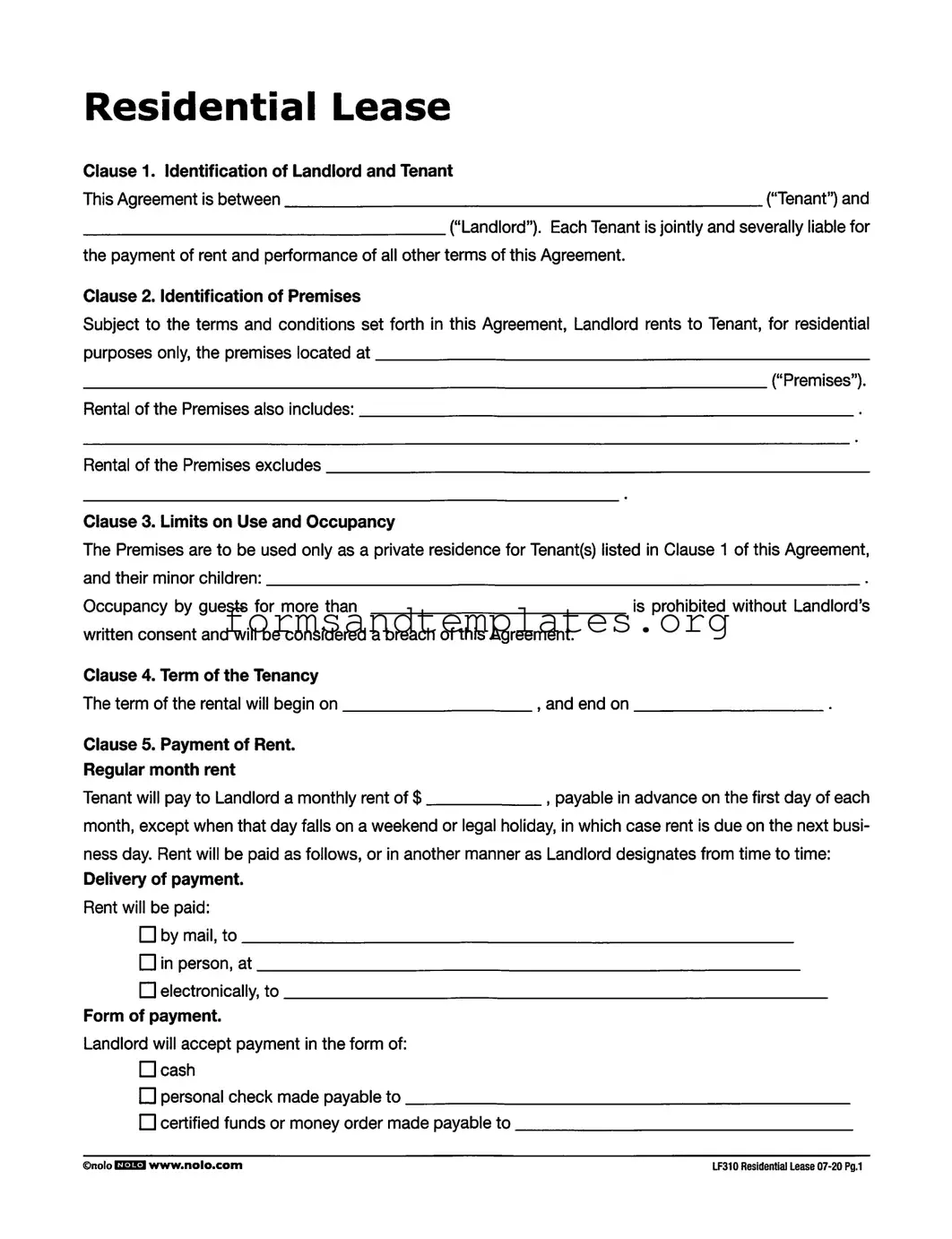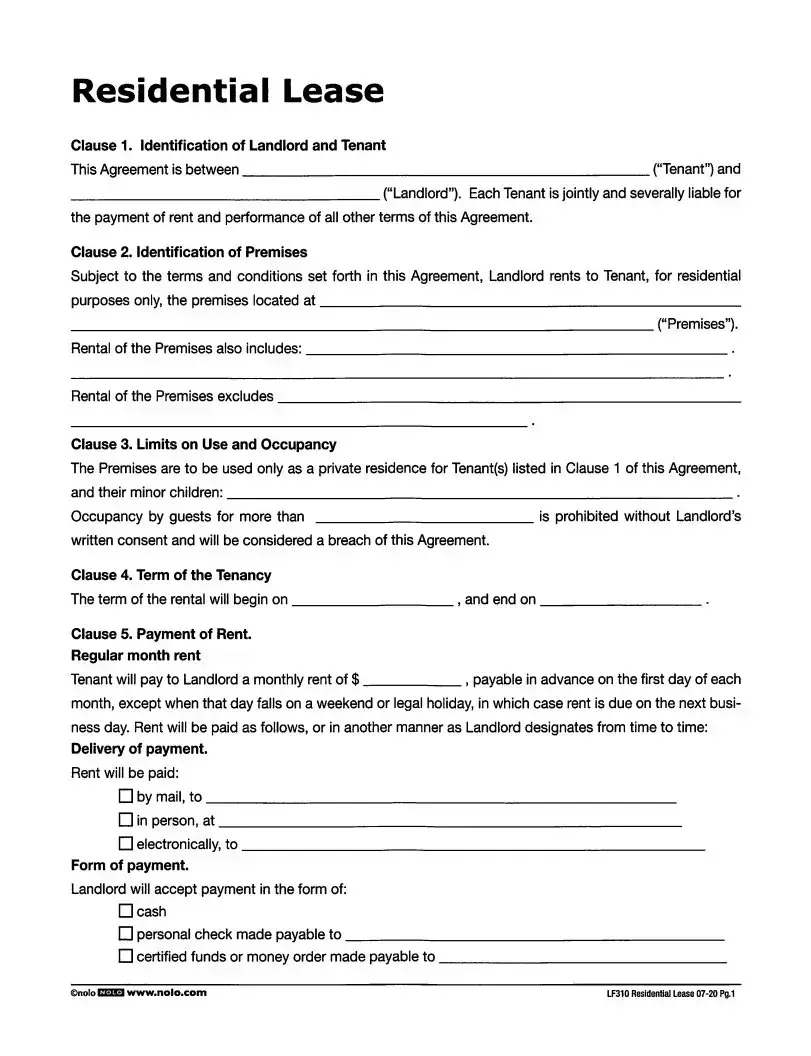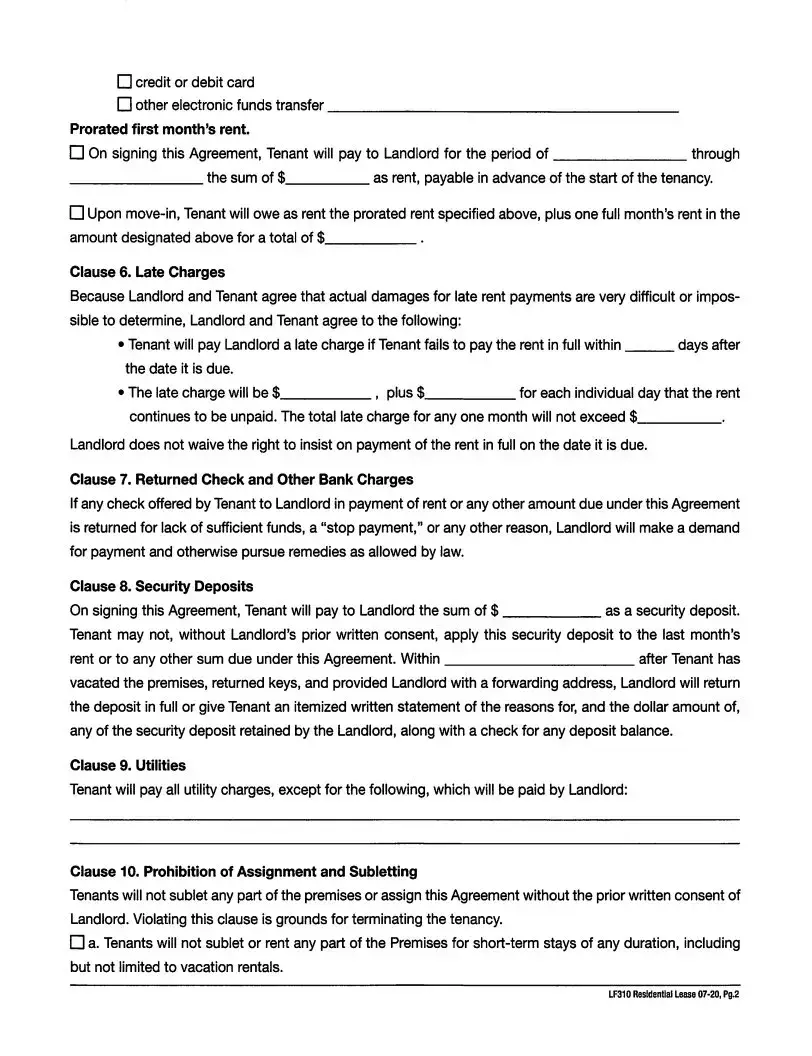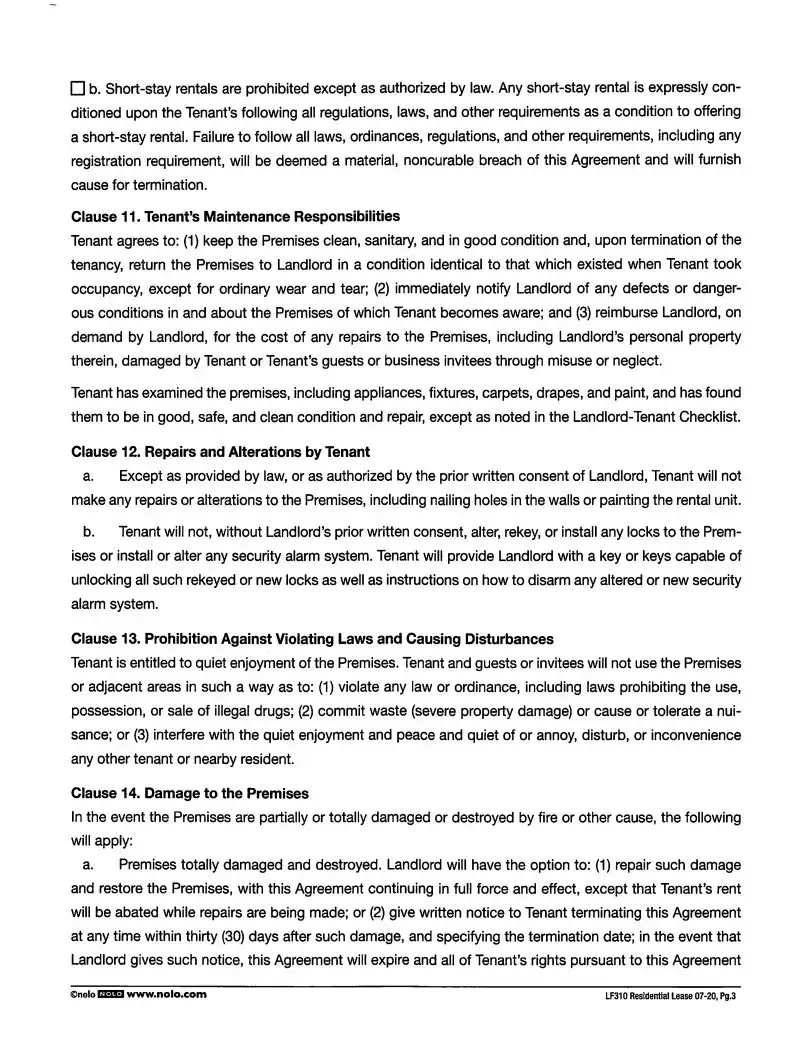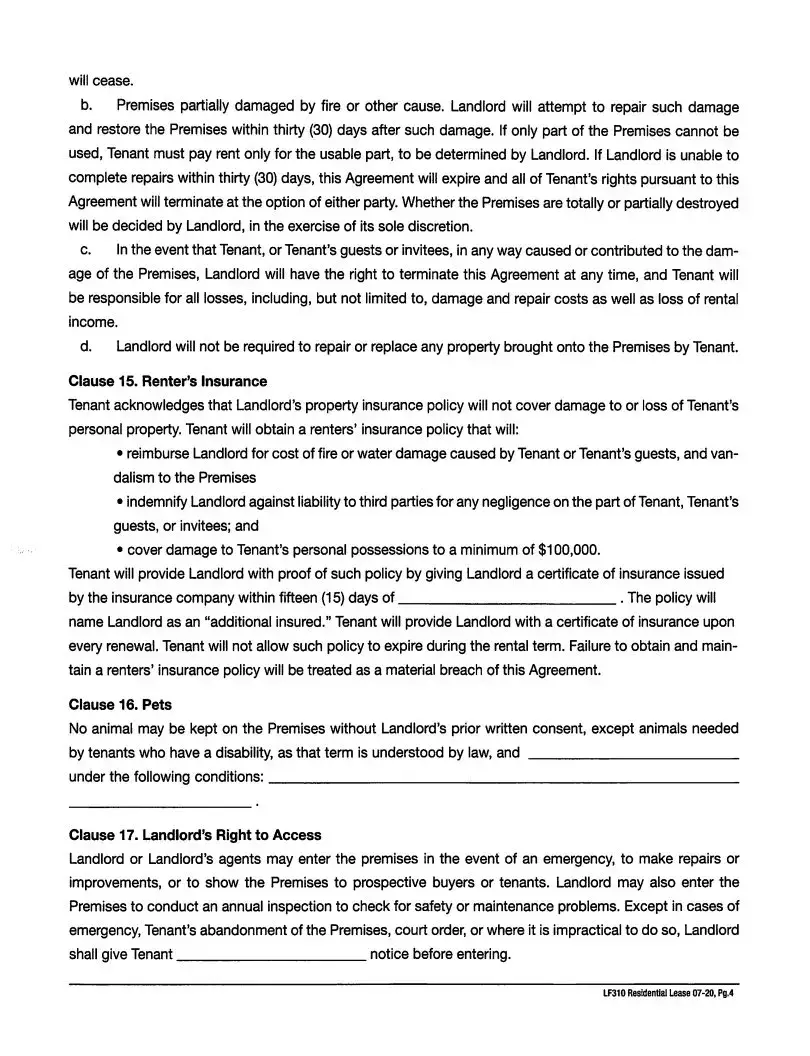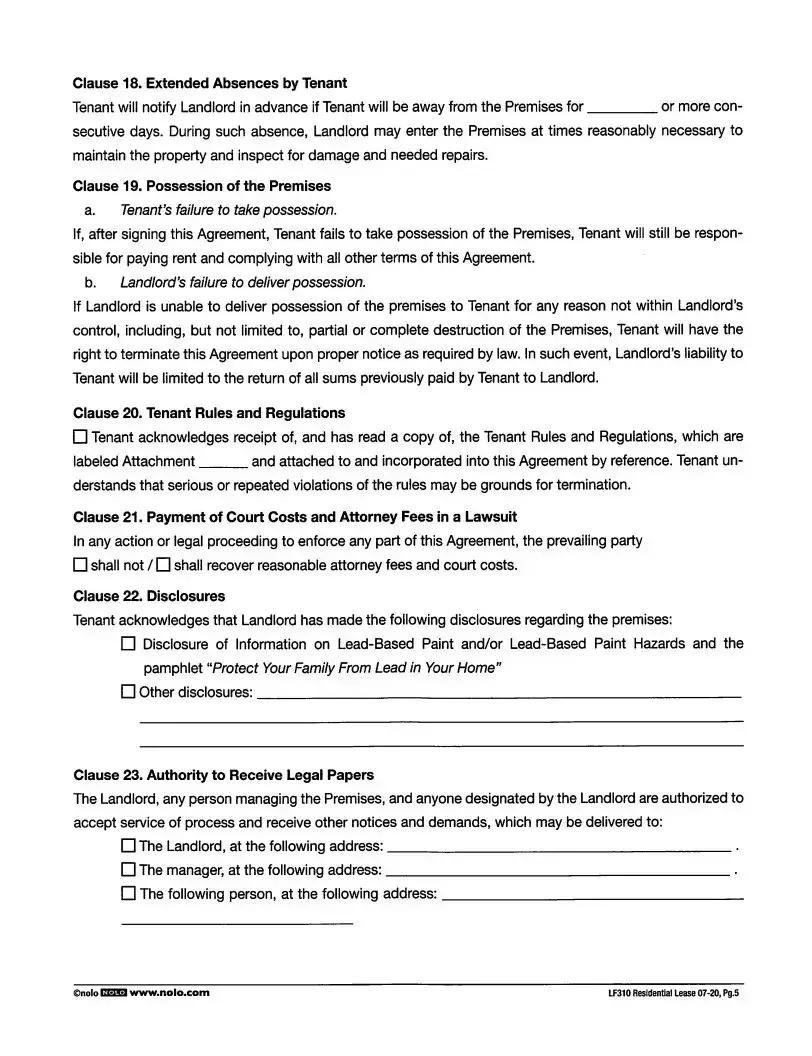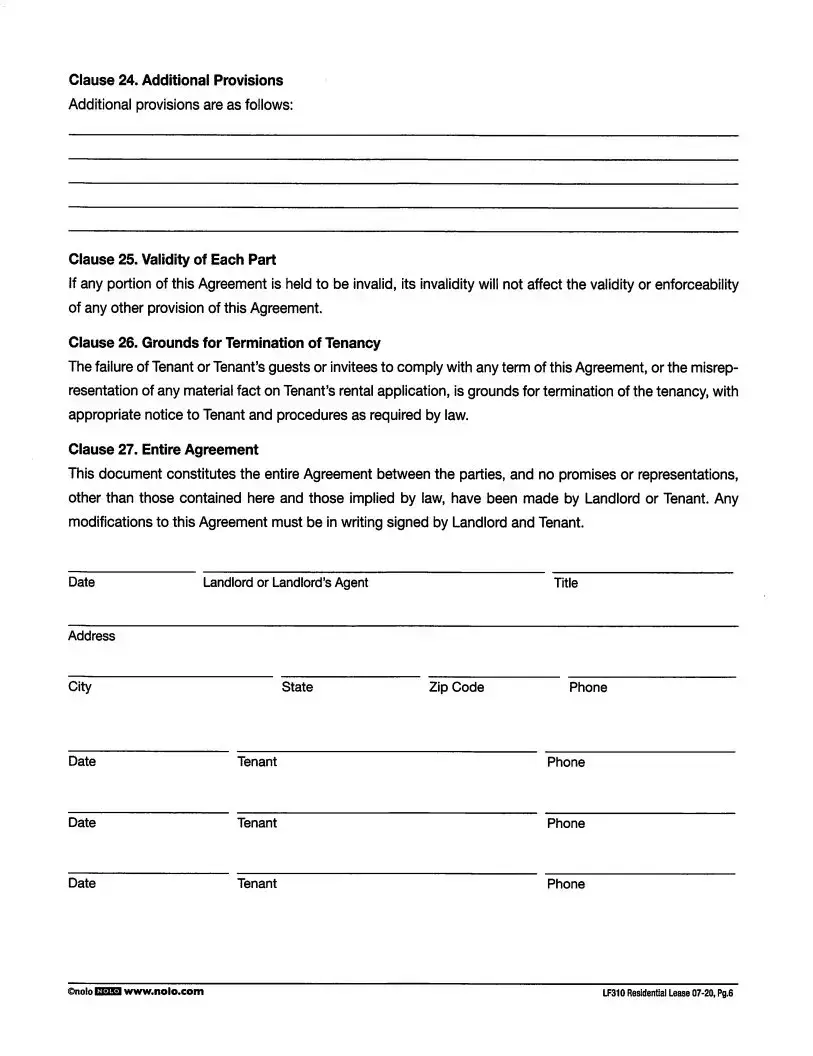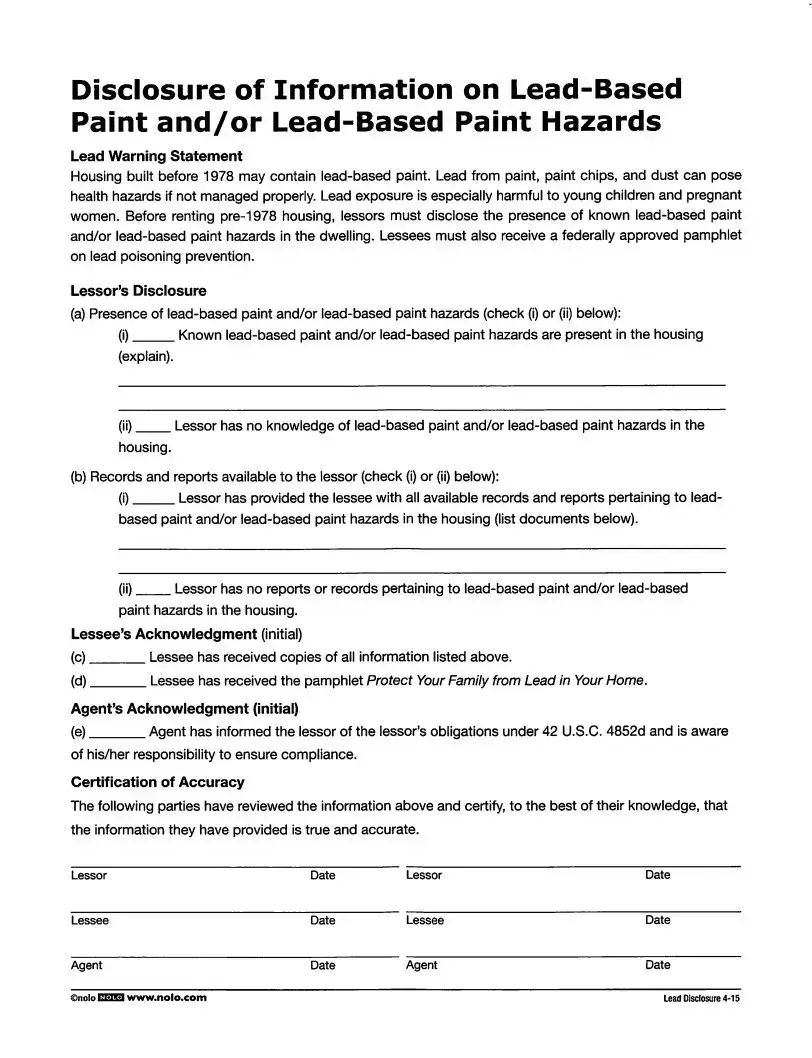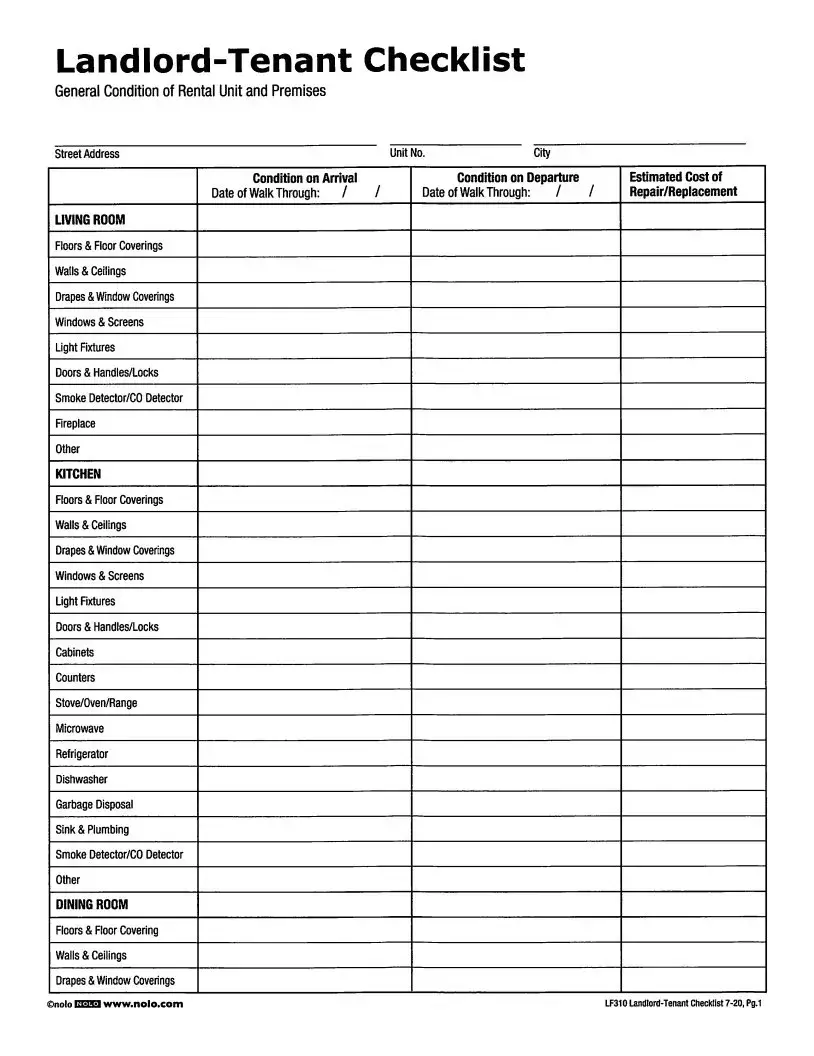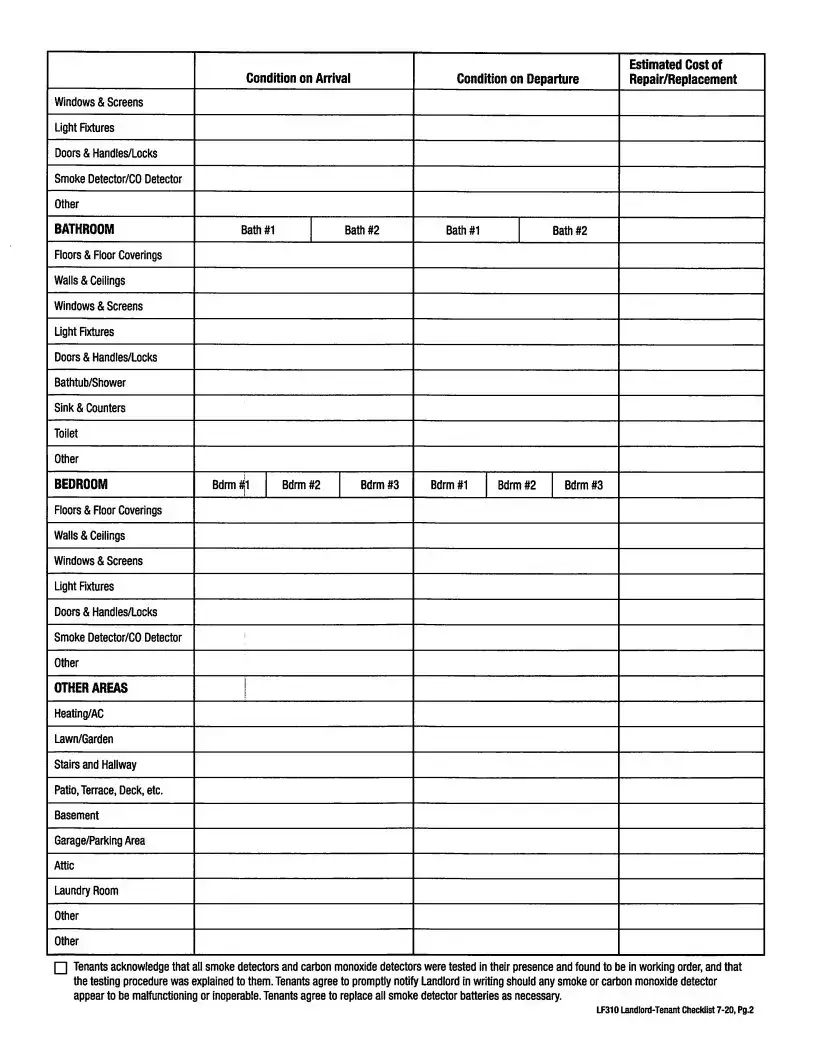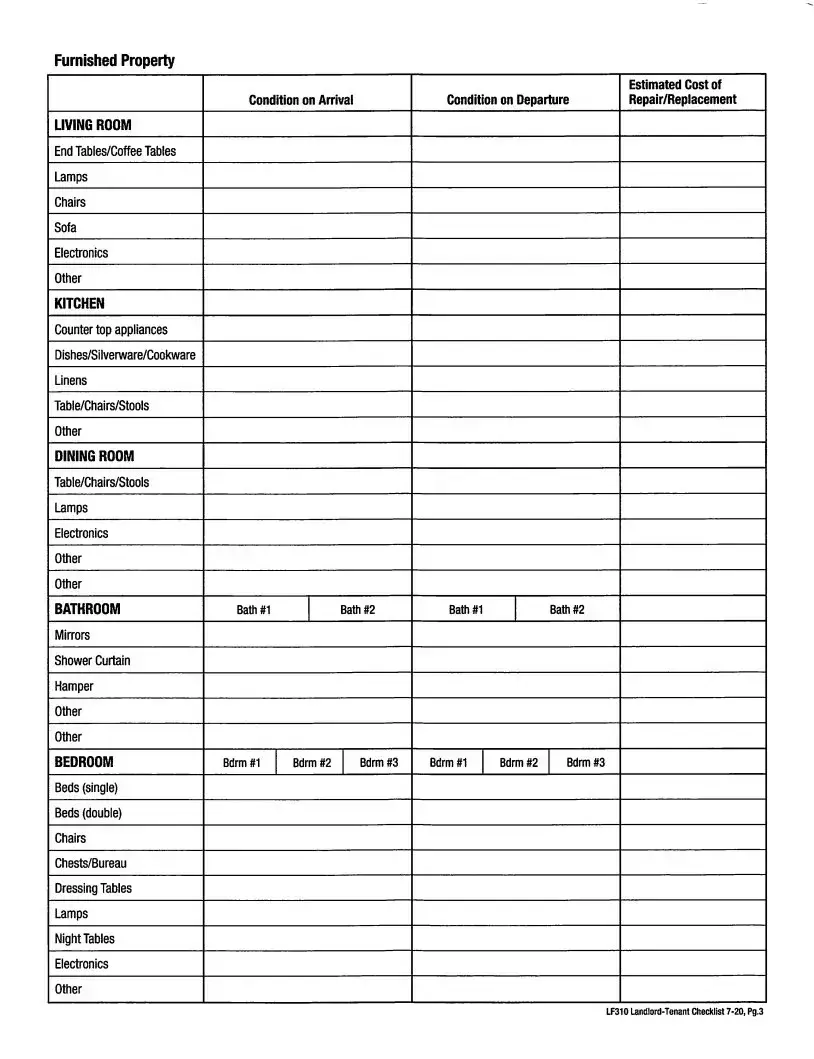The LF310 Residential Lease form serves as a comprehensive agreement between landlords and tenants, outlining the fundamental aspects of the rental relationship. This document begins by identifying both parties, establishing that each tenant is jointly responsible for rent and compliance with the lease terms. It specifies the premises being rented, ensuring that the property is used solely for residential purposes by the designated tenants and their minor children. The lease also defines the term of the tenancy, which commences on a specified date and concludes on another, setting clear expectations for both parties. Payment of rent is a critical component, detailing the monthly rental amount, due dates, and acceptable forms of payment, including options like cash, checks, and electronic transfers. Additionally, the form addresses late charges, stipulating penalties for overdue payments, as well as procedures for handling returned checks. Security deposits are also covered, requiring tenants to pay a specified amount upfront, with conditions for its return following the end of the tenancy. Utilities responsibilities are clarified, indicating which party is accountable for specific charges. Finally, the lease prohibits subletting and assignment without the landlord's consent, reinforcing the importance of maintaining control over the rental property. Each of these clauses plays a vital role in protecting the interests of both landlords and tenants, ensuring a clear and enforceable rental agreement.
